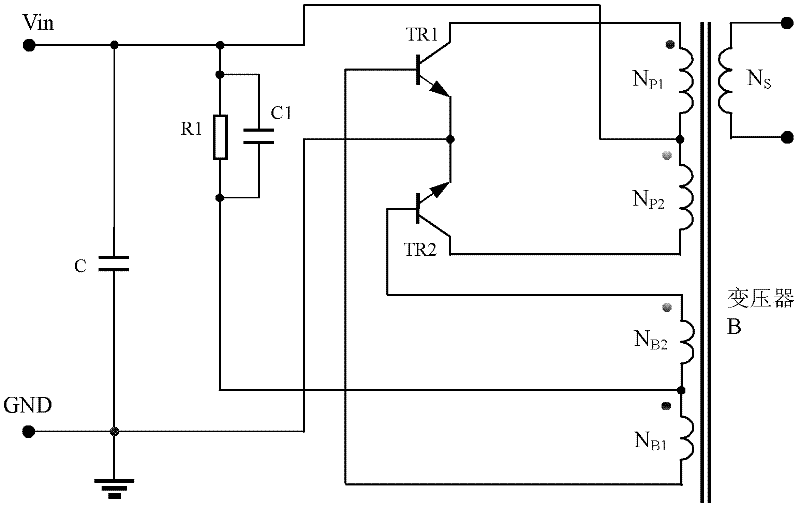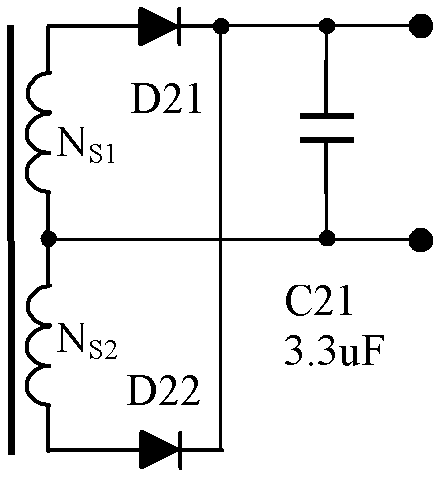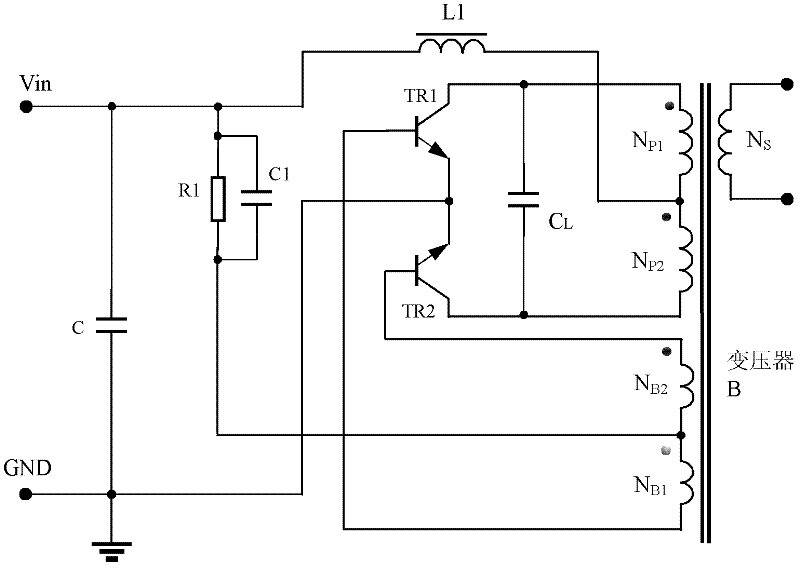A self-excited push-pull converter
A self-excited push-pull, converter technology, applied in the direction of conversion of DC power input to DC power output, AC power input to DC power output, output power conversion device, etc., can solve the problem of poor short-circuit protection performance, efficiency and efficiency. The short-circuit protection performance is not well balanced, and the short-circuit time is long, so as to achieve high-efficiency short-circuit protection performance, good short-circuit protection performance, and short-circuit protection performance improvement.
- Summary
- Abstract
- Description
- Claims
- Application Information
AI Technical Summary
Problems solved by technology
Method used
Image
Examples
Embodiment Construction
[0045] Image 6 It shows the self-excited push-pull converter of Embodiment 1 of the present invention, including filter capacitor C, bias resistor R1, starting capacitor C1, first triode TR1, second triode TR2, transformer B and inductor L N , its circuit structure is the same as that of the self-excited push-pull converter (such as figure 1 ) are basically the same, the only difference is that the power supply terminal Vin passes through the newly added inductance L N connected to the center tap of the transformer B primary winding, the inductance L N The inductance is less than one-tenth of the inductance of one of the primary windings (NP1, NP2) in transformer B, and the center tap of the primary winding is the connection point between the first primary winding NP1 and the second primary winding NP2.
[0046] Among them, when the values of the two primary windings (the first primary winding NP1 and the second primary winding NP2) of the transformer B are different, the...
PUM
 Login to View More
Login to View More Abstract
Description
Claims
Application Information
 Login to View More
Login to View More - R&D
- Intellectual Property
- Life Sciences
- Materials
- Tech Scout
- Unparalleled Data Quality
- Higher Quality Content
- 60% Fewer Hallucinations
Browse by: Latest US Patents, China's latest patents, Technical Efficacy Thesaurus, Application Domain, Technology Topic, Popular Technical Reports.
© 2025 PatSnap. All rights reserved.Legal|Privacy policy|Modern Slavery Act Transparency Statement|Sitemap|About US| Contact US: help@patsnap.com



